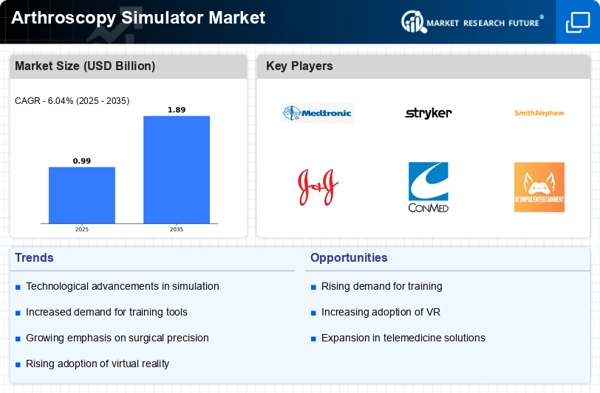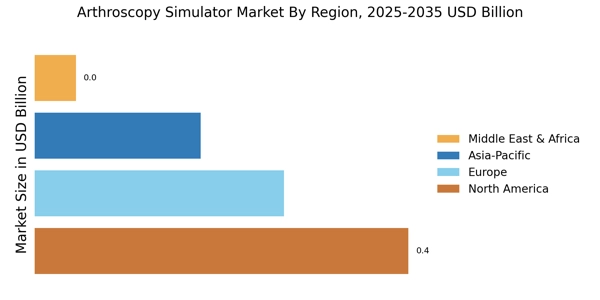Emphasis on Surgical Education
There is a growing emphasis on surgical education and training within the healthcare sector, which significantly impacts the Arthroscopy Simulator Market. Medical institutions are increasingly recognizing the importance of hands-on training for surgical residents and fellows. As a result, there is a shift towards incorporating simulation-based training into curricula. This approach not only enhances the learning experience but also reduces the risk of errors during actual surgeries. The market for surgical simulators is expected to expand, with projections indicating a potential increase in investment in training technologies. This trend underscores the necessity for advanced arthroscopy simulators to meet the educational demands of the evolving healthcare landscape.
Integration of Virtual Reality
The integration of virtual reality (VR) technology into the Arthroscopy Simulator Market appears to enhance the training experience for surgical professionals. By providing immersive environments, VR allows trainees to practice complex procedures in a risk-free setting. This technology not only improves skill acquisition but also boosts confidence among surgeons. The market for VR in medical training is projected to grow significantly, with estimates suggesting a compound annual growth rate of over 30% in the coming years. As more institutions adopt VR-based simulators, the demand for advanced arthroscopy simulators is likely to increase, driving growth in the Arthroscopy Simulator Market.
Rising Incidence of Joint Disorders
The rising incidence of joint disorders, such as osteoarthritis and rheumatoid arthritis, is a critical driver for the Arthroscopy Simulator Market. As the global population ages, the prevalence of these conditions is expected to rise, leading to an increased demand for arthroscopic surgeries. According to recent data, the number of arthroscopic procedures performed annually is projected to reach millions, necessitating a well-trained surgical workforce. Consequently, the need for effective training tools, such as arthroscopy simulators, becomes paramount. This trend indicates a robust growth trajectory for the Arthroscopy Simulator Market, as healthcare providers seek to enhance surgical outcomes through improved training.
Technological Advancements in Simulation
Technological advancements in simulation technology are transforming the Arthroscopy Simulator Market. Innovations such as haptic feedback, high-definition graphics, and real-time performance analytics are enhancing the realism and effectiveness of training simulators. These advancements allow trainees to experience lifelike scenarios, improving their skills and decision-making abilities. The market for surgical simulation technology is anticipated to grow, driven by the continuous development of more sophisticated and user-friendly simulators. As healthcare providers seek to adopt the latest technologies to improve surgical training, the demand for advanced arthroscopy simulators is likely to rise, further propelling the growth of the Arthroscopy Simulator Market.
Increased Investment in Healthcare Infrastructure
Increased investment in healthcare infrastructure is a significant driver for the Arthroscopy Simulator Market. Governments and private entities are allocating substantial resources to enhance medical facilities and training programs. This investment often includes the procurement of advanced training tools, such as arthroscopy simulators, to ensure that healthcare professionals are adequately prepared for surgical procedures. As healthcare systems evolve and expand, the demand for effective training solutions is expected to grow. This trend suggests a positive outlook for the Arthroscopy Simulator Market, as more institutions recognize the value of investing in high-quality training technologies to improve patient outcomes.


















Leave a Comment